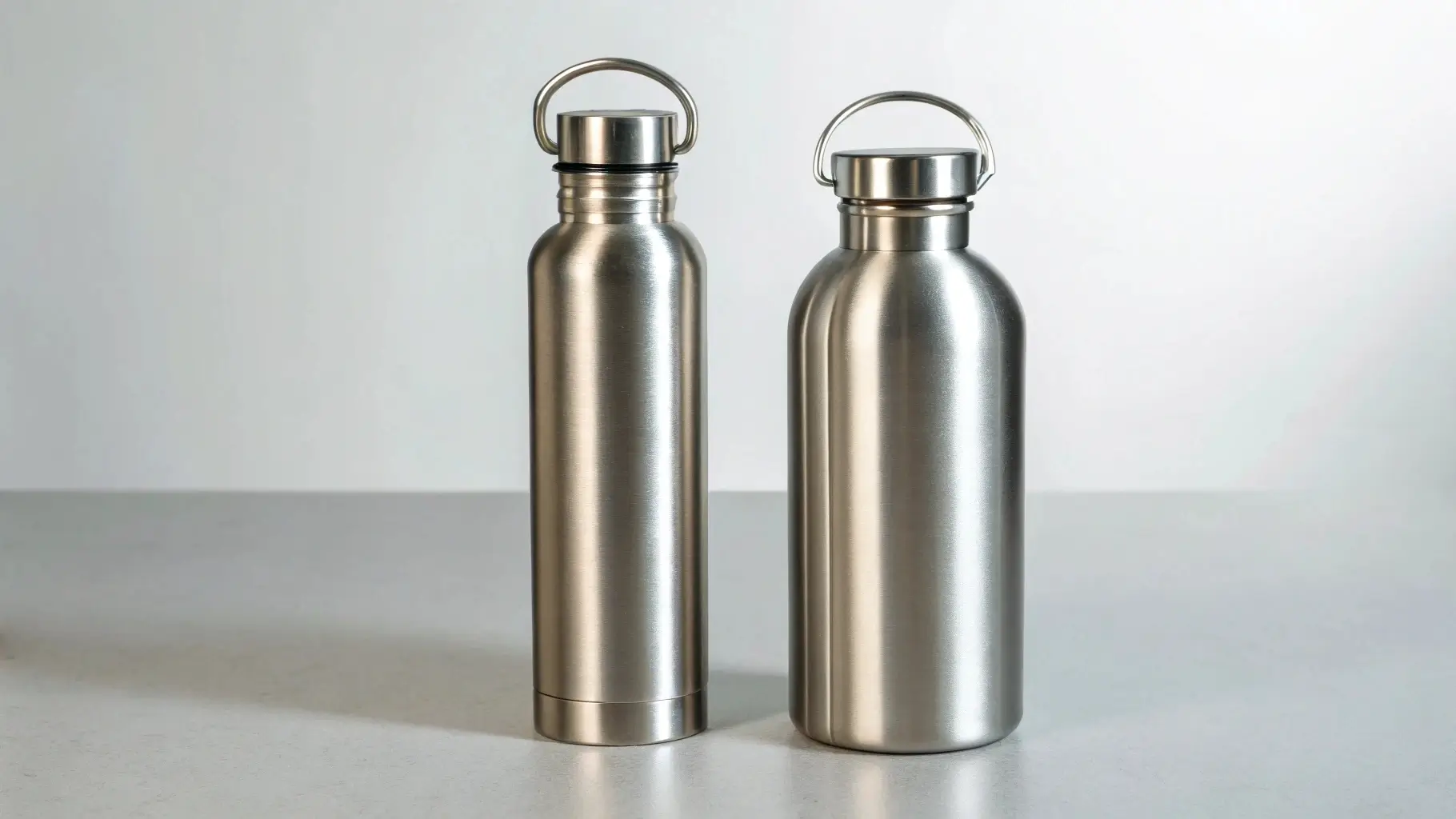
Are you curious about the materials used in metal water bottles? Let’s dive into what makes these bottles durable, safe, and effective for your hydration needs.
Metal water bottles1 are typically made from stainless steel or aluminum. Each material has unique qualities that affect durability, temperature retention, and safety.
Read on to learn the differences between these materials and their benefits.
Is It OK to Drink Water From a Metal Bottle?
You want to make sure your bottle is safe for drinking. I assure you that the metal bottles I make are safe and reliable.
Drinking water from a metal bottle is generally safe if it is made of food-grade stainless steel or aluminum2. These metals are non-toxic and prevent bacterial growth.
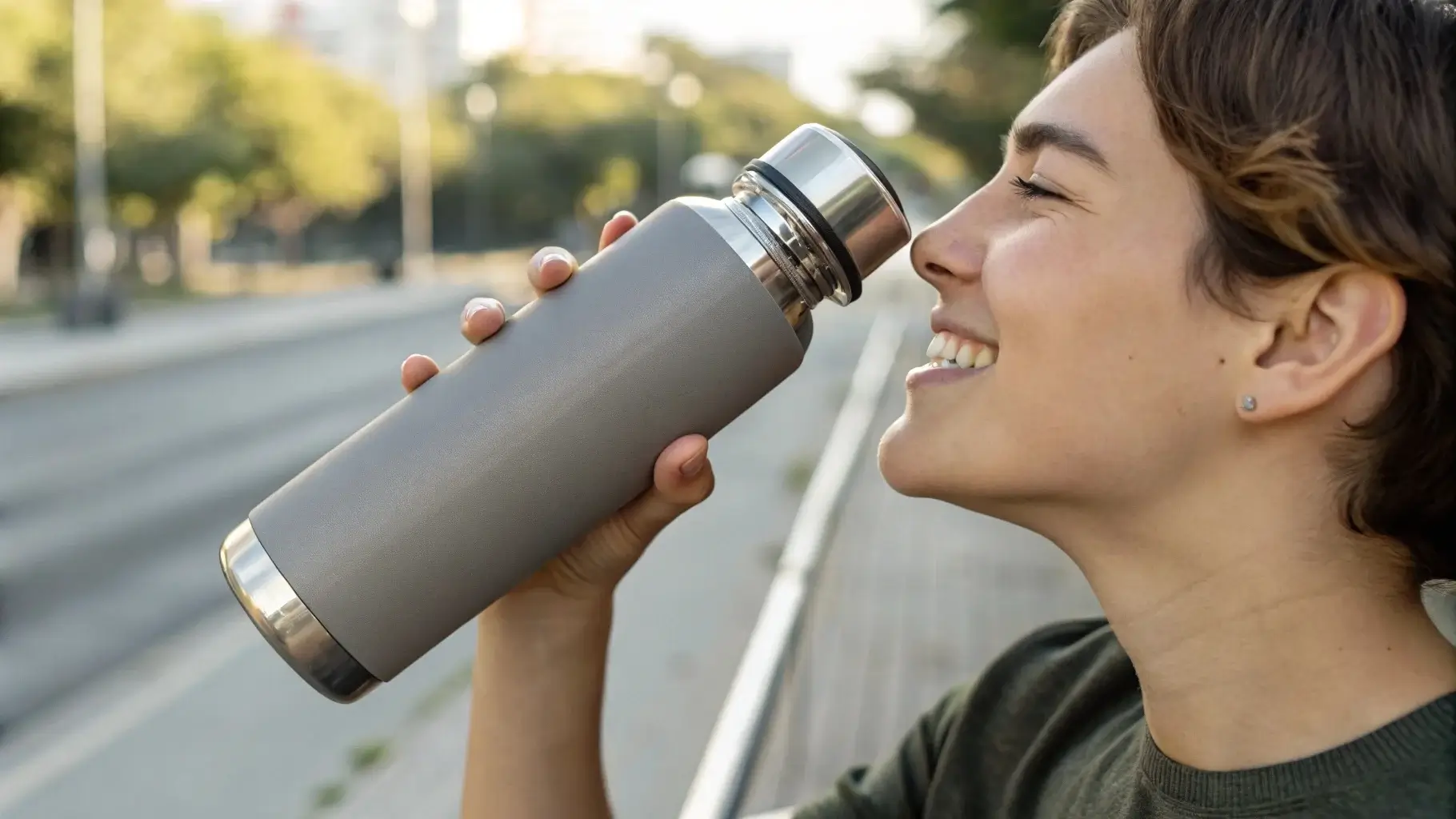
When I started producing metal bottles at Sibottle, I chose stainless steel and aluminum because they are both safe and long-lasting. Stainless steel, in particular, is the most common choice. It doesn’t rust easily and is resistant to corrosion, making it ideal for contact with liquids. I’ve seen many of our customers use our bottles daily, and they report no issues with taste or contamination.
Why Stainless Steel is Safe for Drinking Water
Stainless steel is non-reactive, meaning it won’t leach chemicals into your drink. It is made by combining steel with chromium, which makes it resistant to rust and corrosion. Most water bottles today are made with 304 or 316-grade stainless steel3. Both are food-safe, meaning they won’t affect the taste or safety of your water. I always ensure that the products we manufacture comply with FDA and LFGB food safety standards.
Aluminum Bottles and Safety
Aluminum bottles are lightweight and often more affordable than stainless steel. However, aluminum alone can react with acidic drinks like juice or soda, which is why many aluminum bottles are lined with an enamel or epoxy coating4. Without this coating, the aluminum can corrode over time, which might affect the taste of the liquid. I’ve worked with clients who prefer stainless steel because they are concerned about potential reactions with acidic substances.
| Material | Reactivity | Safety Feature |
|---|---|---|
| Stainless Steel | Non-reactive, durable | Resistant to rust, no chemical leaching |
| Aluminum (Unlined) | Reactive with acids | Can corrode without a protective lining |
| Aluminum (Lined) | Less reactive | Protective coating prevents reactions |
From my perspective, both materials are safe if manufactured properly. It’s important to buy from reliable brands that test for food safety5.
Are Metal Water Bottles Healthier?
You want to make a healthy choice. I can tell you that metal bottles are a great option for hydration.
Metal water bottles are healthier6 compared to plastic alternatives. They don't leach harmful chemicals like BPA, which can be found in some plastic bottles.
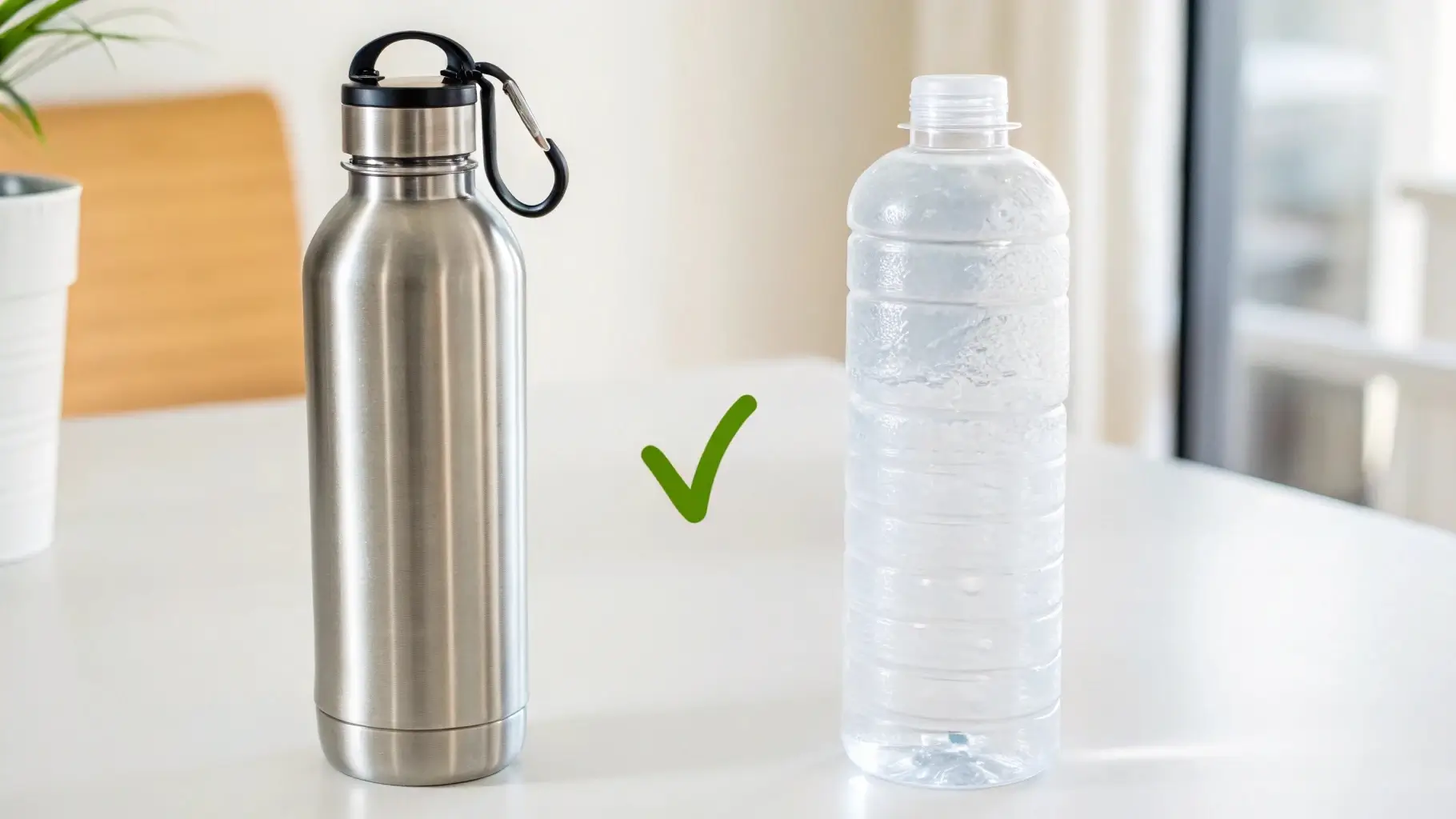
When I started sourcing materials for my water bottles, I chose metal over plastic because of the health concerns surrounding BPA (Bisphenol A)7. Bisphenol A is a chemical commonly found in plastics, and it has been linked to various health risks, including hormone disruption. Metal bottles, especially stainless steel, don’t contain BPA, making them a healthier alternative. I also noticed that our customers appreciate the durability and long lifespan of metal bottles. They don’t crack or degrade over time like plastic bottles.
BPA-Free Bottles
BPA is often used to harden plastics. Over time, it can leach into the contents of the bottle. Stainless steel and aluminum, on the other hand, are inert materials8 that don’t release harmful chemicals. At Sibottle, all our products are BPA-free. We use high-quality stainless steel or aluminum that complies with strict global regulations, such as FDA and LFGB standards. That ensures your water stays clean and safe.
Long-Term Health Benefits
By using a metal bottle, you’re also reducing your exposure to other chemicals often found in plastic bottles. Many plastics contain phthalates9, which are used to make the plastic flexible. Phthalates can also interfere with hormone function. In my experience, customers who switched to metal bottles report feeling more comfortable knowing that they are not exposed to these chemicals.
| Material | Health Risks | Key Benefits |
|---|---|---|
| Stainless Steel | No chemical leaching | BPA-free, durable, long-lasting |
| Aluminum | Potential for lining leaching | Lightweight, safe with proper coating |
| Plastic (BPA-free) | Phthalates, possible chemical leaching | Light, affordable, but short lifespan |
From my perspective, metal water bottles offer the healthiest solution. They are more stable and won’t introduce harmful chemicals into your drinks.
Is It Safe to Drink Water From Aluminum Bottles?
Many people wonder if aluminum bottles are safe. I’ve worked closely with aluminum suppliers, and here’s what I know.
Aluminum bottles can be safe10 if they are coated or lined. Without a coating, they may react with acidic substances, leading to corrosion.
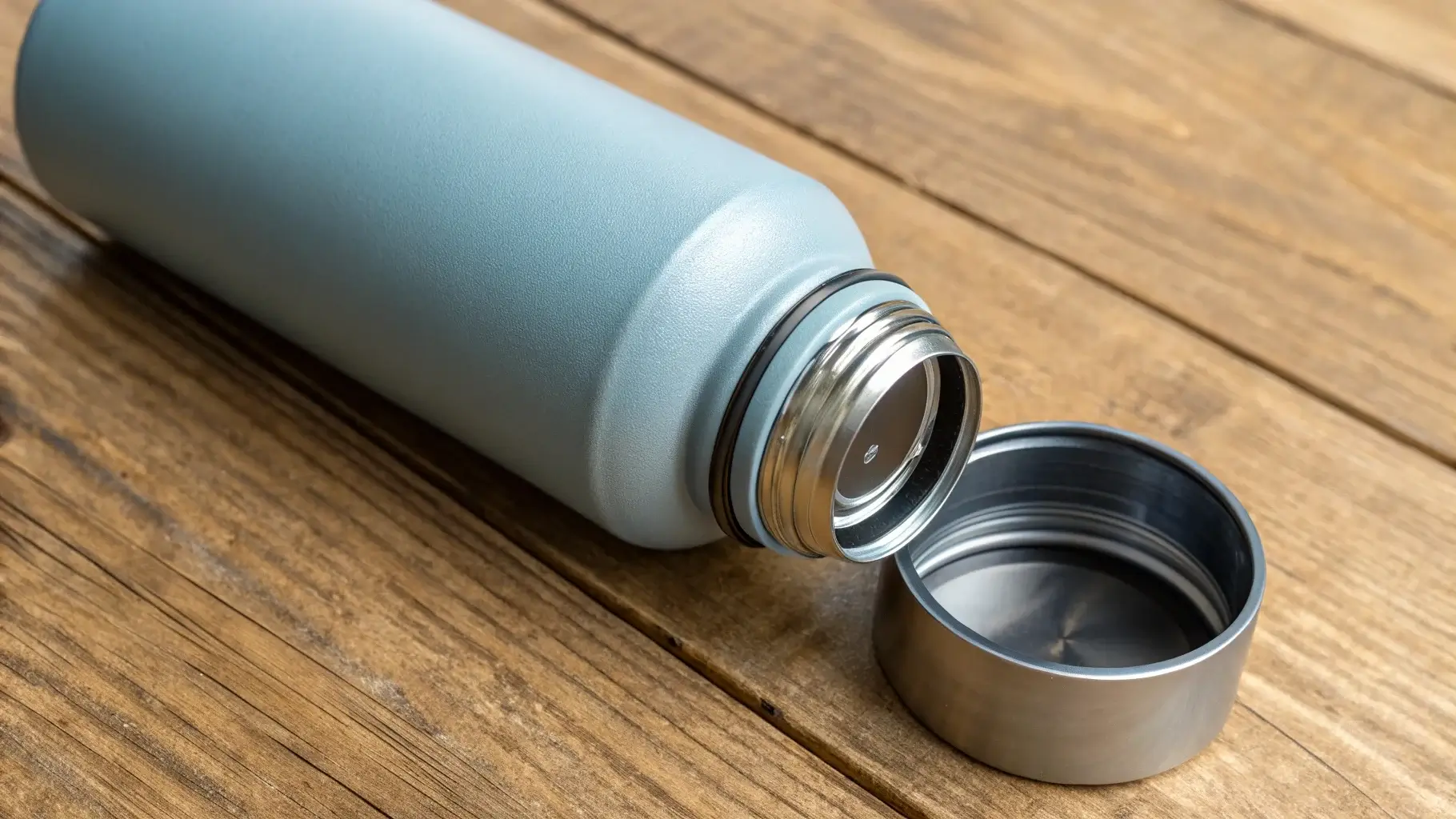
I’ve personally used both stainless steel and aluminum bottles. Aluminum bottles are lightweight, making them great for travel, but they are more likely to corrode if used without a protective lining. That’s why most aluminum water bottles are lined with a food-safe enamel or epoxy11 coating. This prevents the aluminum from reacting with your water or other liquids, keeping it safe for consumption. The key is to make sure that the aluminum is properly lined.
Coatings for Protection
The enamel or epoxy coating protects the aluminum from the liquid inside, ensuring that it doesn’t corrode. I have seen bottles where the coating starts to wear down after prolonged use. This is why I recommend inspecting your bottle regularly for signs of wear. If you notice any chips or cracks in the coating, it’s a good idea to replace the bottle.
Aluminum vs Stainless Steel
Stainless steel is less likely to react with drinks, which is why it is often the better choice for long-term use. However, aluminum bottles are still a viable option if they are lined properly. The coating ensures that no harmful reactions take place, and the aluminum bottle remains safe to use.
| Material | Risk of Reactivity | Safety Measure |
|---|---|---|
| Aluminum (Unlined) | Reacts with acids | Requires a coating to prevent corrosion |
| Aluminum (Lined) | Non-reactive | Coating protects against corrosion |
| Stainless Steel | No reactivity | Safe for all liquids, no coating required |
From my experience, both aluminum and stainless steel can be safe, as long as you choose high-quality, well-made products with the proper coatings.
How Do I Tell if My Water Bottle Is Stainless Steel or Aluminum?
It can be hard to tell the difference between stainless steel and aluminum bottles. Let me guide you.
Stainless steel bottles are heavier12 and more durable than aluminum bottles, which are lighter and may dent more easily.
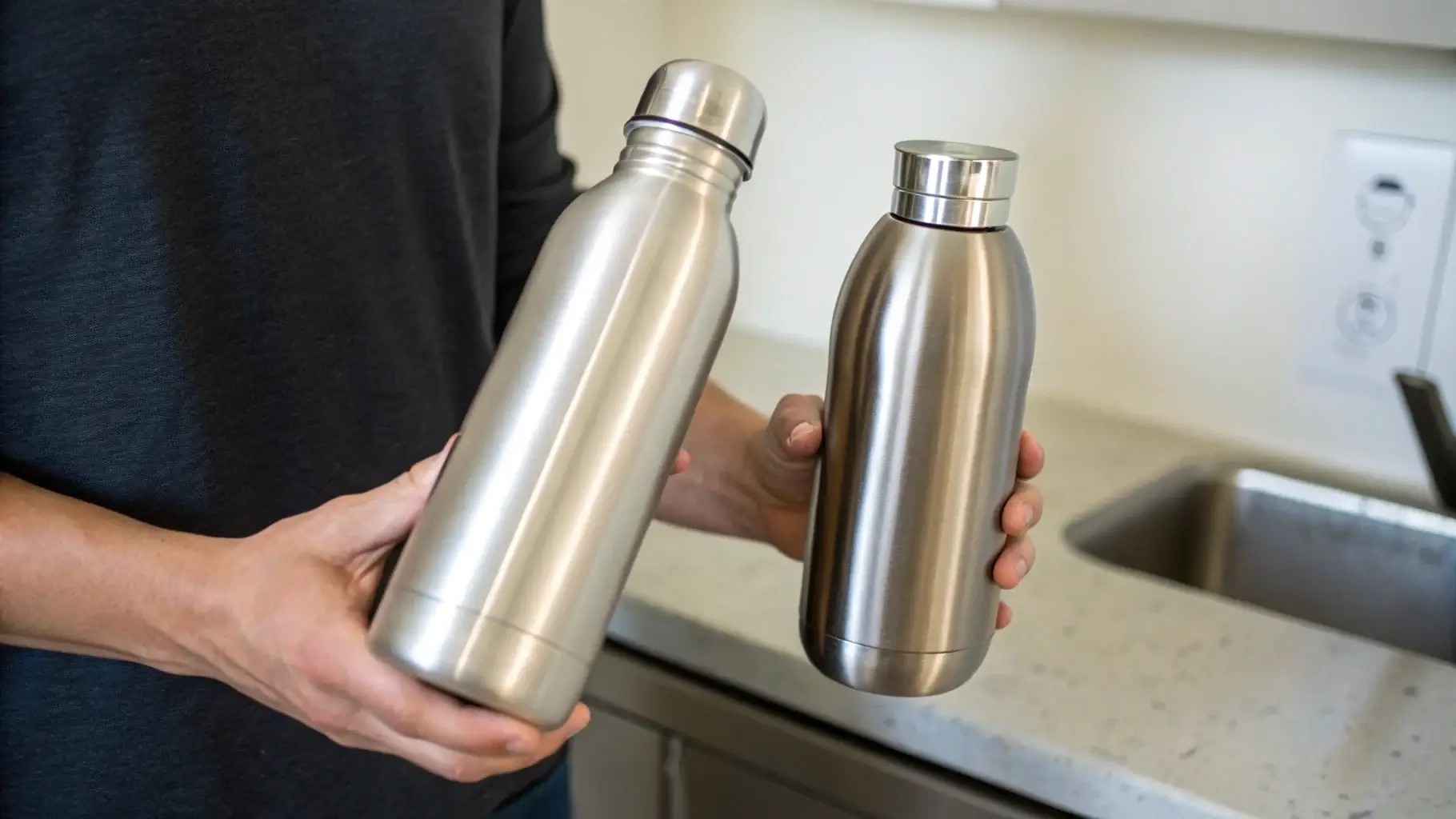
When I first started in the industry, I had to learn how to differentiate between stainless steel and aluminum bottles. Stainless steel has a much heavier feel to it. It also has a shiny, smooth surface that feels cooler to the touch. Aluminum bottles are lighter and may feel a bit “softer” when pressed with your fingers. They often have a matte or brushed finish, although some can have a glossy coating.
Testing the Material
- Weight Test: Stainless steel bottles are typically heavier than aluminum. If the bottle feels very light, it is probably made of aluminum.
- Sound Test: Tap the bottle. Stainless steel produces a higher-pitched sound, while aluminum produces a duller thud.
- Scratch Test: Aluminum is softer than stainless steel and is more prone to scratches or dents.
Finish and Appearance
Stainless steel bottles are usually more polished, and the finish is sleek and shiny. Aluminum bottles often have a more rugged or matte appearance, though they can be coated for color and protection. I’ve seen customers use these methods to quickly identify their bottles, especially in situations where they need to replace one.
| Feature | Stainless Steel | Aluminum |
|---|---|---|
| Weight | Heavier, denser | Lighter, more flexible |
| Sound | Higher pitch when tapped | Duller, less resonant |
| Finish | Shiny, polished | Matte, brushed or glossy coatings |
| Durability | More resistant to dents | More prone to dents and scratches |
From my perspective, distinguishing between stainless steel and aluminum is easy once you know what to look for. Use these tips to identify the material and ensure you’re using the right bottle for your needs.
Does Water Mold in a Metal Water Bottle?
Water can mold if left in a bottle for too long without cleaning. I have tips to keep your bottle fresh.
Water itself won’t mold13 in a metal bottle, but leftover liquid and moisture can lead to mold growth if not cleaned properly.
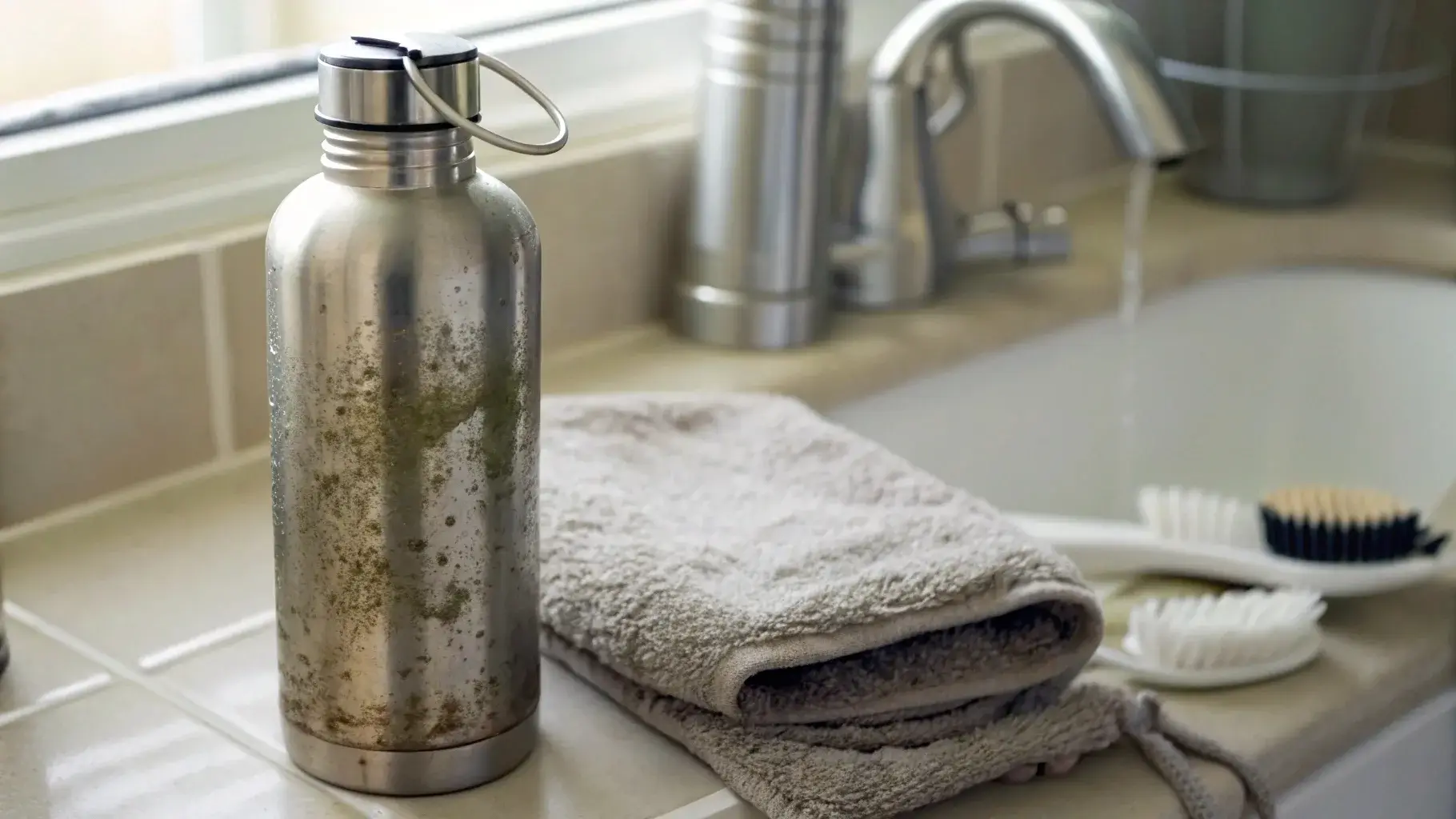
I’ve worked with clients who didn’t clean their metal bottles regularly. Over time, moisture from leftover liquid can cause mold to grow, especially if the bottle is not fully dried after use. This is true for both stainless steel and aluminum bottles. Mold needs a moist environment to grow, so it’s important to regularly clean your bottle14. I always recommend that customers rinse their bottle with warm water and soap after each use, especially if the bottle is used for beverages like tea or juice.
Mold Prevention Tips
- Clean After Each Use: Rinse the bottle after every use, especially if you’ve used it for beverages other than water.
- Dry Thoroughly: Make sure to dry the inside of the bottle completely before sealing the lid.
- Use a Bottle Brush: A bottle brush can help clean areas that are hard to reach, like the neck of the bottle.
| Cleaning Tip | Why It Helps |
|---|---|
| Rinse After Use | Prevents moisture from staying in the bottle |
| Dry Thoroughly | Stops mold growth by keeping the bottle dry |
| Bottle Brush | Helps clean hard-to-reach areas |
From my experience, regular cleaning is the key to avoiding mold in metal bottles. By taking proper care of your bottle, you can keep it fresh and mold-free for years.
Conclusion
Metal water bottles are made of stainless steel or aluminum, both offering safety, durability, and health benefits. They require proper care to keep them in top condition and mold-free.
-
Learn what materials make metal bottles safe and effective ↩
-
Food-grade stainless steel and aluminum are non-toxic and safe for water ↩
-
304 and 316 stainless steel are industry standards for food safety ↩
-
Epoxy and enamel coatings in aluminum bottles prevent metal reactivity ↩
-
Reputable manufacturers test metal bottles for food safety compliance ↩
-
Metal bottles eliminate health risks linked to plastic alternatives ↩
-
BPA is a harmful chemical found in many plastics ↩
-
Inert metals like stainless steel don’t leach chemicals into water ↩
-
Phthalates in plastics may disrupt hormone function ↩
-
Aluminum bottles require proper lining for safe use ↩
-
Coatings prevent corrosion and maintain aluminum bottle safety ↩
-
Use weight, sound, and appearance to identify bottle material ↩
-
Mold doesn’t grow in water, but in leftover residue or moisture ↩
-
Regular cleaning prevents mold growth inside metal bottles ↩

